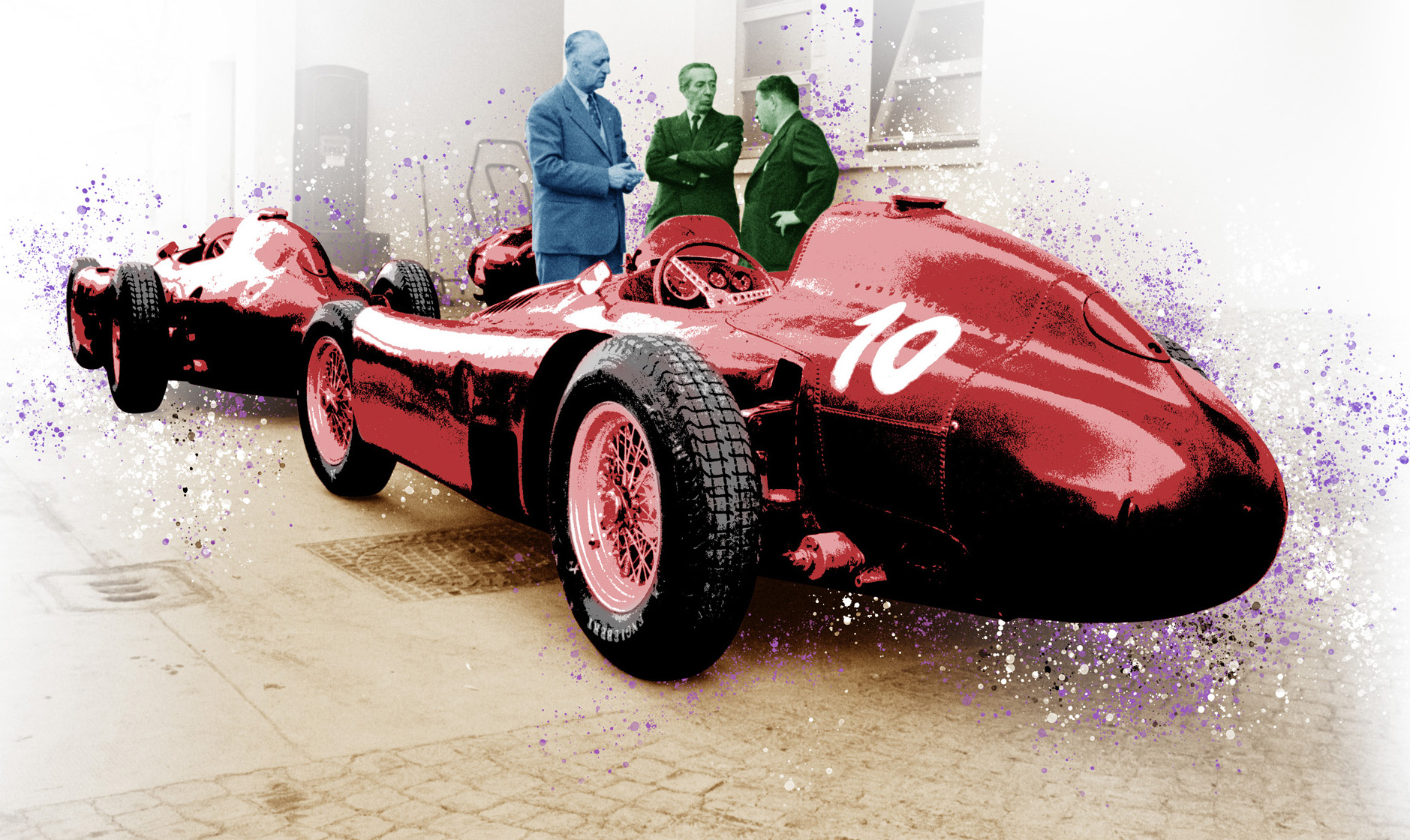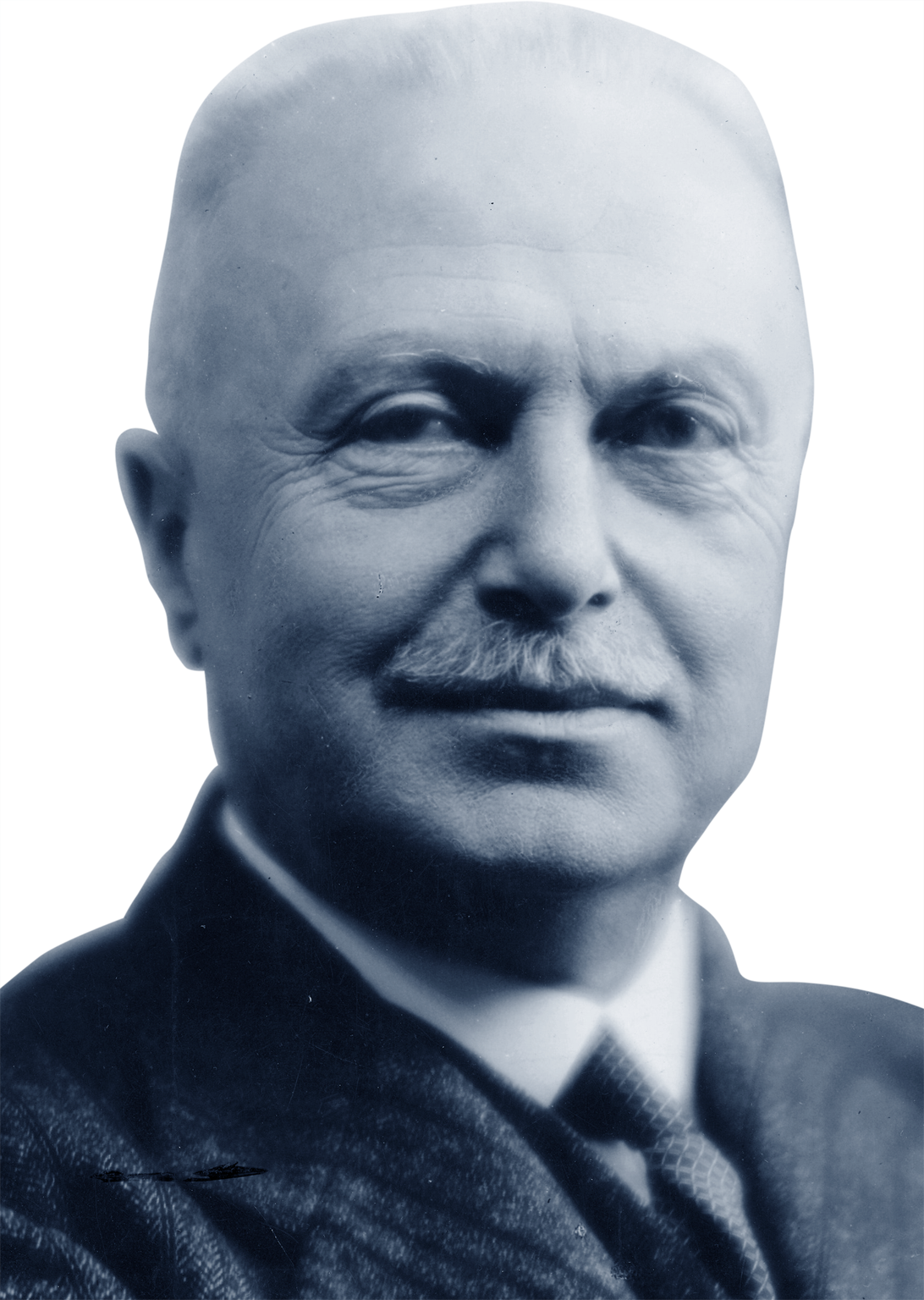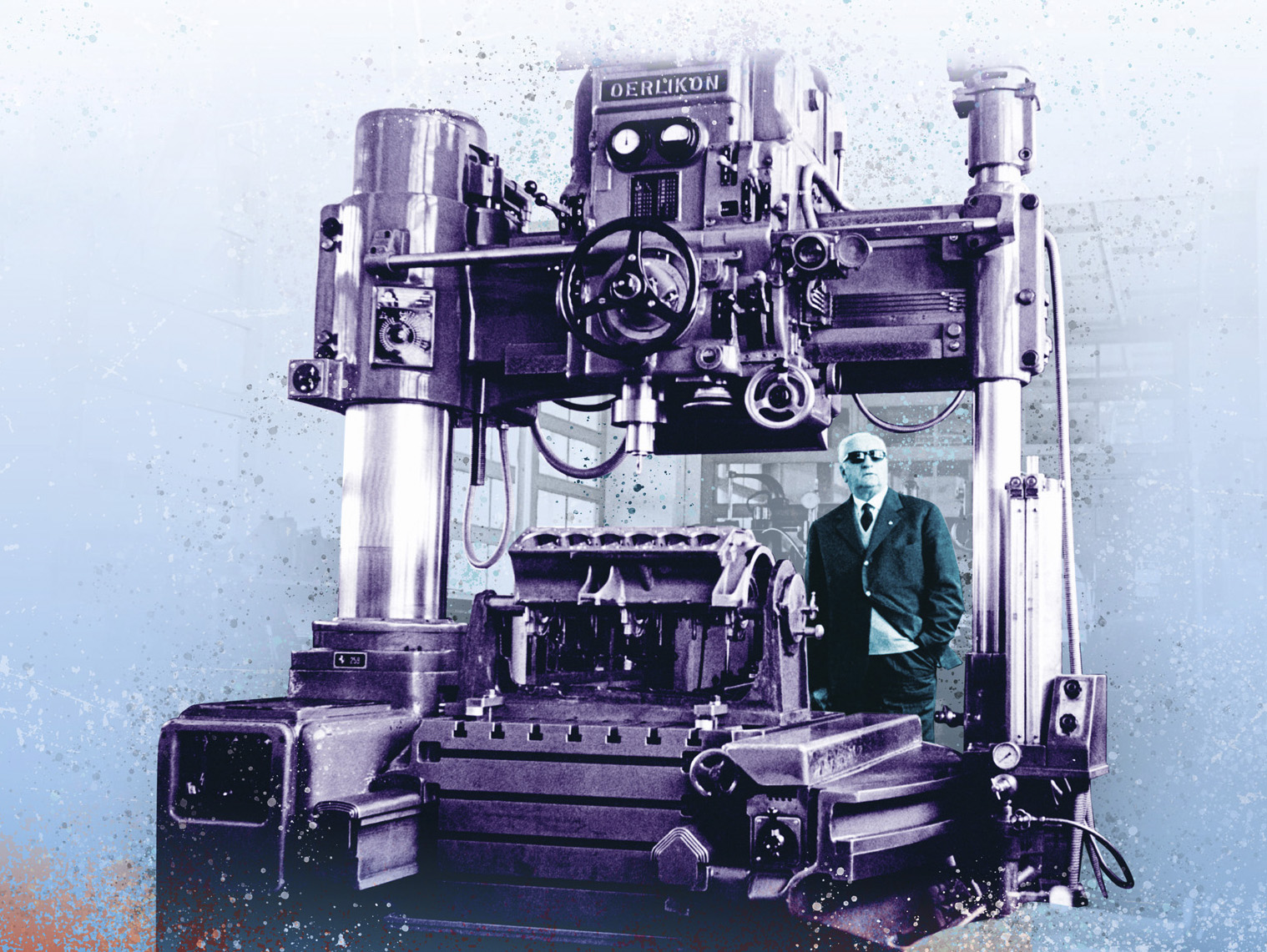
ENZO FERRARI
1898–1988
Enzo Ferrari’s single-minded determination and obsession with car racing led him to become a legendary sports car producer. As an accomplished racing driver, engineer, racing team director, and manufacturer, he dominated competitions worldwide for decades, and his cars are still a mark of quality today.
Born in Modena, Italy, Enzo Anselmo Ferrari was the son of a metal fabricator who supplied parts to the Italian railways. In 1908, aged 10, Ferrari was taken by his father to see his first car race at the Circuito di Bologna, firing his ambition to become a racing driver. Ferrari survived service in the Italian Army during World War I, but nearly died in the 1918 postwar flu pandemic that swept Europe. Desperate to find work after recovering, he was rejected for a job at Fiat but found employment as a test driver for a small firm in Turin. A year later he moved to Milan, joining Costruzioni Meccaniche Nazionali, first as a test driver and then as a racing driver.
Alfa Romeo years
By 1920, Ferrari had garnered enough success to be offered a job at Alfa Romeo as a racing driver, winning his first Grand Prix in Ravenna for them in 1923. Allegedly, the family of legendary Italian fighter pilot Francesco Baracca, killed in action in 1918, were so impressed by Ferrari’s courage in this race that they presented him with their son’s squadron badge – a prancing horse on a shield. Ferrari adopted this famous symbol for his company, Scuderia Ferrari, set up in 1929 as a racing division of Alfa Romeo. In 1932 Ferrari retired from driving and turned his attention to directing the large racing team of over 40 drivers. However, by 1937, Alfa Romeo had set up their own racing department. The Scuderia Ferrari division closed and Ferrari was fired in 1939. Determined to beat Alfa in a Ferrari car, but with a severance deal that meant he could not compete under the Ferrari name for four years, he founded Auto Avio Costruzioni – the banner under which the first Ferrari cars raced in 1940.

Ferrari (left) and head mechanic Vittorio Bellentani (right) discuss the Lancia Ferrari D50 outside the Ferrari factory in 1956. The car featured unique side-mounted fuel tanks.
“No one remembers who took second place.”
Enzo Ferrari, 1983
GIOVANNI AGNELLI

The founder of Fiat (Fabbrica Italiana Automobili Turino), Giovanni Agnelli used his engineering and entrepreneurial skills to become one of Italy’s leading industrialists and businessmen.
After leaving a career in the military in 1893, Agnelli (1866–1945) was appointed mayor of his home town, Villar Perosa. Hearing of the newly invented horseless carriage, and sensing a business opportunity, he co-founded Fiat with eight other investors in 1899. By 1902, he had been appointed managing director and begun to establish Fiat as the largest and most profitable car manufacturer in Italy, renowned for its engineering. Agnelli remained head of Fiat until his death in 1945.
Racing for business

In 1947, Ferrari produced the first car to bear his name, using a revolutionary 12-cylinder (V12) engine, which improved the car’s speed and handling. Even the most advanced Alfa Romeos had only eight cylinders.
Fixated on winning races and enhancing performance, Ferrari quickly became known for his autocratic management style, and for encouraging intense competition among his drivers. His team soon found success on the track, winning its first major victory in the 24 Hour race of Le Mans in 1949. The next year, Ferrari joined the newly established Formula 1 World Championship (it is the only team to have participated since its inception), gaining a first win at Silverstone, England, in 1951 and the world title in 1952.
Needing to fund his company’s costly racing activities, Ferrari decided to start selling road cars. In 1954, he opened a dealership in Manhattan, New York, and was soon supplying top-of-the-range cars to a rich and famous clientele in the US and Europe. Ferrari’s stroke of genius was to bring the best features of his competition cars – innovative engines, racing styling, and lightweight construction – to his commercial vehicles, making them some of the most desirable sports cars on the market. However, it was racing that continued to be Ferrari’s passion – this “great mania to which one must sacrifice everything”.
By the end of the 1960s, even Ferrari’s competitive drive could not mitigate the rising costs of running a racing team, and he sold 50 per cent of his company to Fiat (later rising to 90 per cent), on the basis that he retained complete control of racing activities. Despite retiring as president in 1977, he maintained this control until his death, aged 90, in 1988.
Over the course of his lifetime, Ferrari’s cars claimed 13 world championships and had over 4,000 major race wins.
“I have in fact no interest in life outside racing cars.”
Enzo Ferrari, 1963

Ferrari opened his factory in Maranello, Italy, in 1943, where it is still in operation. Never taking holidays, he spent most of his time in the factory office, from where he directed his racing team.
MILESTONES
SURVIVES PANDEMIC
Recovers from flu in 1918, which killed his father and brother in 1916; decides to become a racing driver.
JOINS ALFA ROMEO
Starts 19-year association with Alfa Romeo in 1920 as a racing driver; becomes the racing team director.
ESTABLISHES FERRARI
In 1939 sets up Auto Avio Costruzioni to produce his own Ferrari racing cars and to run his own team.
TOPS THE WORLD
Leads Ferrari team to its first world race win at recently formed Formula 1 Championships in 1952.
